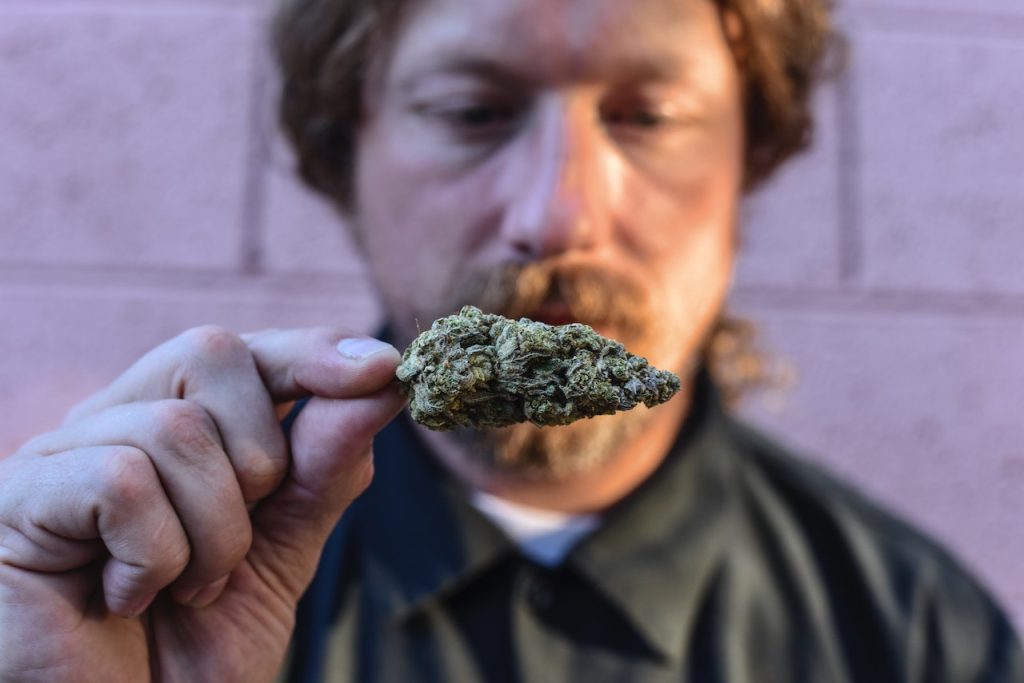As more and more states legalize medical cannabis, the number of patients who have begun using it for chronic pain relief is also growing. This is the finding of a recent study by researchers from the University of Michigan, which found that 25.9% reported using cannabis to relieve chronic pain in the past 12 months, while a full 31% of adults with chronic pain reported using cannabis in the past.
25% Of Adults Use Cannabis for Chronic Pain Relief


As more and more states legalize medical cannabis, the number of patients who have begun using it for chronic pain relief is also growing. This is the finding of a recent study by researchers from the University of Michigan.
To keep up with all the latest cannabis research, legalization, and lifestyle news, download our free cannabis news app.
Cannabis Use for Pain Relief Study
The new study by a group of researchers from the University of Michigan, which was published in JAMA Network Open last week, shows that more than 25% of patients with chronic pain have used cannabis in the past 12 months to relieve feelings of pain.
The researchers contacted a group of 1,724 adults, 96% (1,661) of whom completed a questionnaire about chronic pain.
Almost One-Third of Adults Have Used Cannabis for Pain Relief
Among them, “31.0% of adults with chronic pain reported using cannabis to relieve pain at any time in the past; 25.9% reported using cannabis to relieve chronic pain in the past 12 months, and 23.2% reported using cannabis in the past 30 days,” the researchers wrote.
The researchers found that “more than half of adults who used cannabis to relieve chronic pain reported that cannabis use led them to reduce their use of prescription opioids, non-opioid prescription medications, and over-the-counter pain medications, and less than 1% reported that cannabis use increased their use of these medications.”
“Fewer than half of respondents reported that cannabis use influenced the use of non-pharmacologic pain treatments,” they wrote in their findings.
3 in 10 Adults Use Cannabis for Pain Relief Says Study
“Among adults with chronic pain in this study, 38.7% said cannabis use led to decreased use of physical therapy (5.9% said it led to increased use), 19.1% said it led to decreased meditation (23.7% reported it led to increased frequency of meditation), and 26.0% said it led to decreased psychotherapy (17.1% said it led to increased sessions with a psychotherapist).”
“The majority of those who used cannabis to treat chronic pain reported substituting cannabis for other pain medications, including prescription opioids. The high rate of cannabis substitution for opioids as well as non-opioid drugs underscores the importance of research to clarify the efficacy and potential negative consequences of cannabis use for chronic pain,” the researchers wrote.
The findings could serve as another source of encouragement for patients hoping medical cannabis will help them relieve chronic pain instead of using highly addictive opioid prescription drugs.
Three Waves of Opioid Overdoses
According to the Centers for Disease Control and Prevention (CDC), “more than 564,000 people died from opioid overdoses, including prescription and illicit opioids, between 1999 and 2020.”
The CDC says that “the increase in opioid overdose deaths can be depicted in three distinct waves.”
“The first wave began with increased opioid prescribing in the 1990s, and the number of overdose deaths involving prescription opioids (natural and semisynthetic opioids and methadone) has increased since at least 1999,” according to the CDC.
“The second wave began in 2010 with a sharp increase in heroin overdose deaths. The third wave began in 2013 with a significant increase in overdose deaths from synthetic opioids, particularly illegally produced fentanyl.”
Research Highlights Need for Research in Chronic Pain Relief
Mark Bicket, one of the authors of the new study, who is also an assistant professor in the Department of Anesthesiology and co-director of the Michigan Opioid Prescribing Engagement Network, said that “the fact that patients are reporting substitution of pain medications with cannabis underscores the need for research on the benefits and risks of cannabis in the treatment of chronic pain.”
—
(Featured image by imustbedead via Pexels)
DISCLAIMER: This article was written by a third-party contributor and does not reflect the opinion of Hemp.im, its management, staff, or its associates. Please review our disclaimer for more information.
This article may include forward-looking statements. These forward-looking statements generally are identified by the words “believe,” “project,” “estimate,” “become,” “plan,” “will,” and similar expressions. These forward-looking statements involve known and unknown risks as well as uncertainties, including those discussed in the following cautionary statements and elsewhere in this article and on this site. Although the company may believe that its expectations are based on reasonable assumptions, the actual results that the company may achieve may differ materially from any forward-looking statements, which reflect the opinions of the management of the company only as of the date hereof. Additionally, please make sure to read these important disclosures.
First published in Fakty Konopne, a third-party contributor translated and adapted the article from the original. In case of discrepancy, the original will prevail.
Although we made reasonable efforts to provide accurate translations, some parts may be incorrect. Hemp.im assumes no responsibility for errors, omissions or ambiguities in the translations provided on this website. Any person or entity relying on translated content does so at their own risk. Hemp.im is not responsible for losses caused by such reliance on the accuracy or reliability of translated information. If you wish to report an error or inaccuracy in the translation, we encourage you to contact us.



Comments are closed for this post.